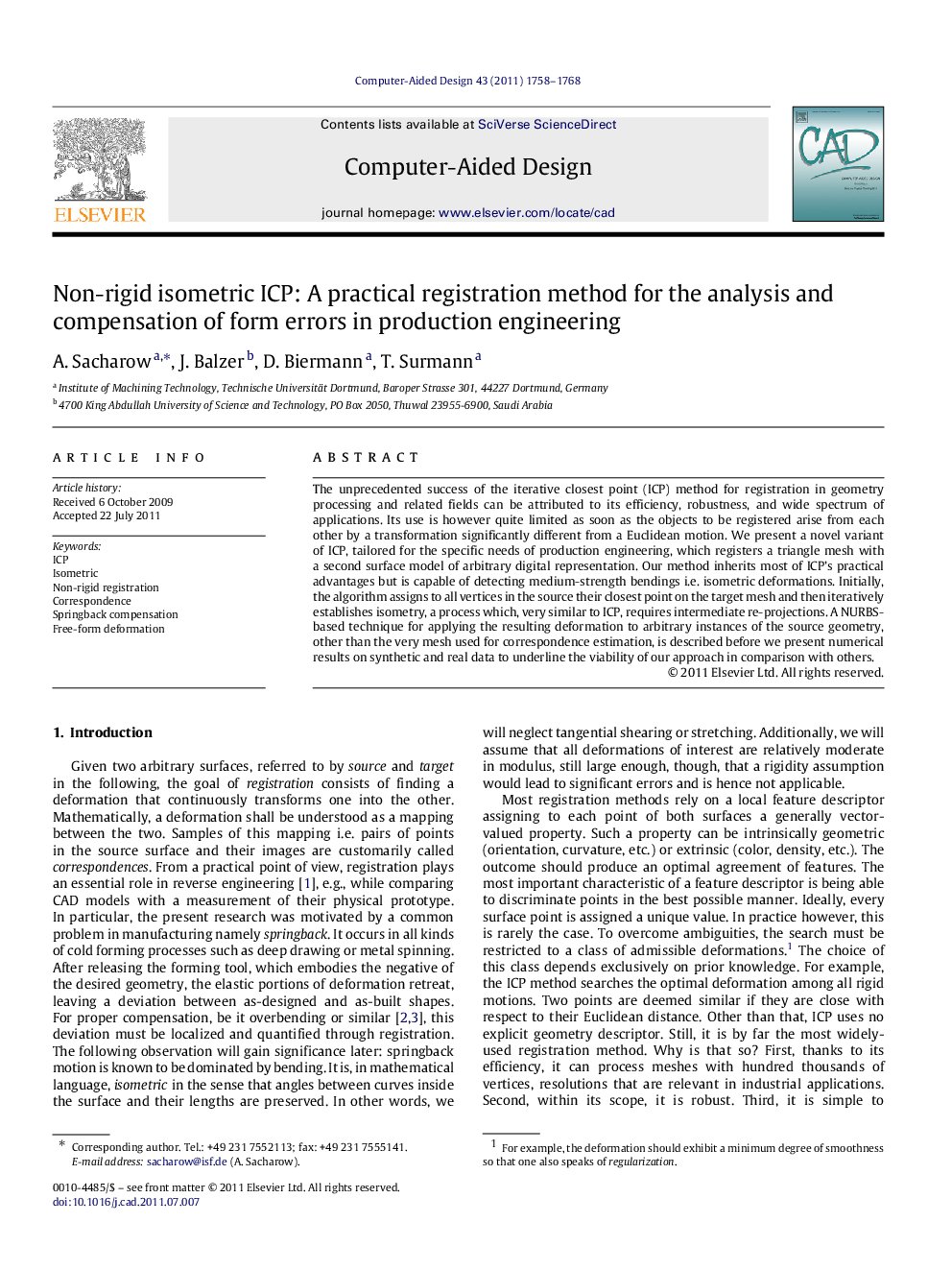| Article ID | Journal | Published Year | Pages | File Type |
|---|---|---|---|---|
| 440207 | Computer-Aided Design | 2011 | 11 Pages |
The unprecedented success of the iterative closest point (ICP) method for registration in geometry processing and related fields can be attributed to its efficiency, robustness, and wide spectrum of applications. Its use is however quite limited as soon as the objects to be registered arise from each other by a transformation significantly different from a Euclidean motion. We present a novel variant of ICP, tailored for the specific needs of production engineering, which registers a triangle mesh with a second surface model of arbitrary digital representation. Our method inherits most of ICP’s practical advantages but is capable of detecting medium-strength bendings i.e. isometric deformations. Initially, the algorithm assigns to all vertices in the source their closest point on the target mesh and then iteratively establishes isometry, a process which, very similar to ICP, requires intermediate re-projections. A NURBS-based technique for applying the resulting deformation to arbitrary instances of the source geometry, other than the very mesh used for correspondence estimation, is described before we present numerical results on synthetic and real data to underline the viability of our approach in comparison with others.
► We developed an isometric, non-rigid registration method. ► The presented method solves the correspondence problem for deformed objects fast and precisely. ► The obtained correspondences allow a form-error compensation based on free-form deformation ► The method is validated on synthetic objects and on real-life workpieces from sheet metal forming.
